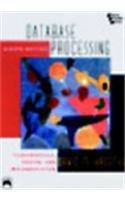Question
Hypothesis space and inductive bias. (4 points) We want to learn an unknown function f that takes n input arguments x 1 , x 2
Hypothesis space and inductive bias.
(4 points) We want to learn an unknown function
f
that takes
n
input arguments
x
1
, x
2
, . . . , x
n
and produces one output
y
. The input variables
are boolean, i.e. each
x
i
can be either T (
true
) or F (
false
). The output variable
y
can take on
one of
k
different values. An example is a healthcare scenario where each of the
x
i
corresponds
to a symptom (the patient has the symptom or not), and
y
corresponds to the diagnosis (there
are
k
diseases that can be diagnosed).
(a) Lets consider the hypothesis space
H
consisting of all functions that take
n
such 2-
valued input arguments and produce one
k
-valued output. How many hypotheses are
there in
H
? Briefly explain your answer.
(b) Is the inductive bias in
H
high or low? What are the implications of this for a machine
learning algorithm that tries to learn the unknown function
f
from training data?
(c) Say that you get a training dataset with
p
different training examples, each of the
form ((
x
1
, x
2
, . . . , x
n
)
, y
). How many hypotheses in
H
are consistent with these training
examples? Briefly explain your answer.
Step by Step Solution
There are 3 Steps involved in it
Step: 1

Get Instant Access to Expert-Tailored Solutions
See step-by-step solutions with expert insights and AI powered tools for academic success
Step: 2

Step: 3

Ace Your Homework with AI
Get the answers you need in no time with our AI-driven, step-by-step assistance
Get Started


